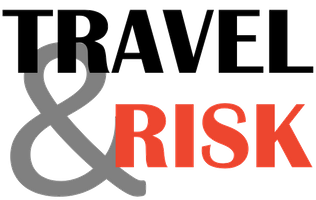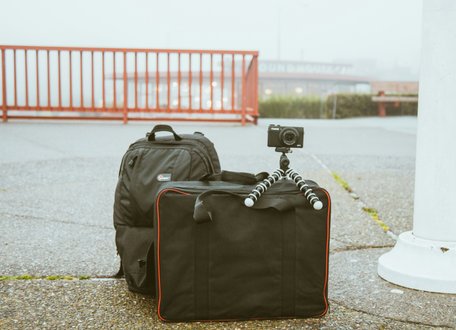PACKING FOR HIGH-RISK TRAVELS
At Travel & Risk, we work to equip travelers to prevent and manage the challenges and dangers that can arise when international travelling is part of your work. There is always a risk, when you travel, and it always make sence to do a little safety preperation before you travel, but if you are going to a high-risk destination, you should never neglect your personal travel risk assessment. You need to make concious choises on your risk acceptance and risk mitigation. Below you will find a few pieces of advice on what to pack.
To mitigate the identified risks it can be crucial to bring the right equipment. From navigating political instability to preventing a robbery or dealing with a terrorist attack, packing the right gear can make a significant difference in your ability to handle unforeseen circumstances effectively.
If you have not read our article about travel pharmacy, where you will find advice on what medicine to bring on your trip, you should do so. To have a medicine with you, that you are familiar with in your home country, can be a great benifit in some situation. You should always get advice from a doctor and often you will have one available from your insurance company, but if you are adviced to take some pain killers, what would you prefer: Some green capsules in a plastic bag from the local pharmacy? Or the pain killers commonly used in your own counrtry?
YOUR GRAB BAG
How you store or carry your gear during your trip is important. The idea of a grab bag can be helpful. Picture you are at a hotel in a remote area in a high risk country. You wake up in the night and there is a fire at the hotel. Electricity is off, everything it is completely dark. But you know, that next to your bed, there is a bag with your passport and travel documents, a flashlight, some cash, a bottle of water, a powerbank, an extra phone, your first aid kit etc. You just grab your grab bag and hurry out of the hotel through the emergency exits. You will appreciate the little effort you have done to make it a habit to keep your things in order and your grab bag ready.
Your grab bag contains your most important items for risk mitigation and supplies for emergencies. The content depends on the risk assessment of your specific trip. Your grab bag should be small and light, not overpacked. If it is too heavy or big you probably will not feel like carrying it and end up leaving it behind. It does not need to be a separate bag; you can also just put the stuff in a compartment in your rucksack. Most importantly, you should always know where it is and what is in it, so you know what you can use it for and how to find it, whether the critical incident is a car crash, an earthquake, a terrorist attack, a missile strike or you get lost in the wilderness.
What it is relevant to bring to mitigate risks depends on your risks analysis, but here are a few things you could consider:
Travel Documents and Identification
Ensure you have all necessary travel documents securely stored in a waterproof pouch. These documents may include:
- Passport and visas: Make multiple copies of your passport and store them separately from the original document. A copy is never as valid as the original passport, but based on your risk analysis, you should make a conscious choice whether you want to walk around with the original or a copy.
- Travel insurance information: Keep a copy of your insurance policy
- Itinerary: Share your travel plans with trusted contacts and keep a paper copy of your itinerary with you.
- A list of emergency contact numbers, i.e. your insurance company, the embassy/consulate, your organizations emergency number
- Basic equipment to lower likelihood of critical incidents
- Flashlight + extra batteries
- Extra cash and an extra credit card
- Travel door lock or door stopper
- Smoke detector alarm
- Powerbank (but try to keep your devises charged instead of using the powerbank – if you need to use a powerbank on a daily basis, get an extra powerbank for an emergency situation)
First aid kit
Always take a close look at your first aid kit and resupply and adjust to your specific trip. Do not bring stuff you do not know how to use – if you do not know it now, you will not figure it out in an emergency. You should ensure you have the following gear in your first aid bag:
- Scissors, tweezers, plastic gloves and plaster
- Big bandages. Most first aid kits for home use have very small bandages, because if you need a big one the ambulance will usually be there shortly.
- Rescue blanket
- Face masks
- Antiseptic wipes (alcohol) and antiseptic cream (Chlorhexidine)
- A small supply of medicine: pain relievers, medicine for stomach problems, malaria-cure, allergy pills, cream for skin rash/irritation, mepyramine cream for insect bites etc.
- An extra supply of any personal prescription medications
Survival equipment for emergencies
If you trip has a high risk of emergencies, consider what you need to lower the impact of the relevant hazards. It could be:
- Water purification tablets or portable water filters.
- Energy bars or nuts to sustain yourself in case of emergencies or delays.
- Satellite phone
- A whistle
- A map and a compass (also download offline maps to your phone, i.e. through the app maps.me)
In certain high-risk environments where the threat of explosive devices or gunfire is prevalent, wearing a fragmentation vest may be needed for protection. If you bring vest and helmet, practise how to put it on, and remember that you need to keep it close. Travel&Risk ApS have fragmentation vests and helmets for both sale and rent.
The above is for inspiration – there is a lot more to say about risk mitigation and stuff to bring or not to bring. Remember that you need to analyze the risks and decide what you need in order to lower likelihood and lower impact of hazards relevant for your specific trip.
Safe travels!



